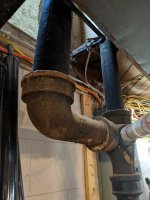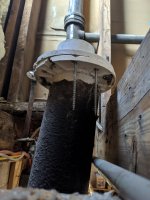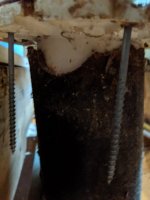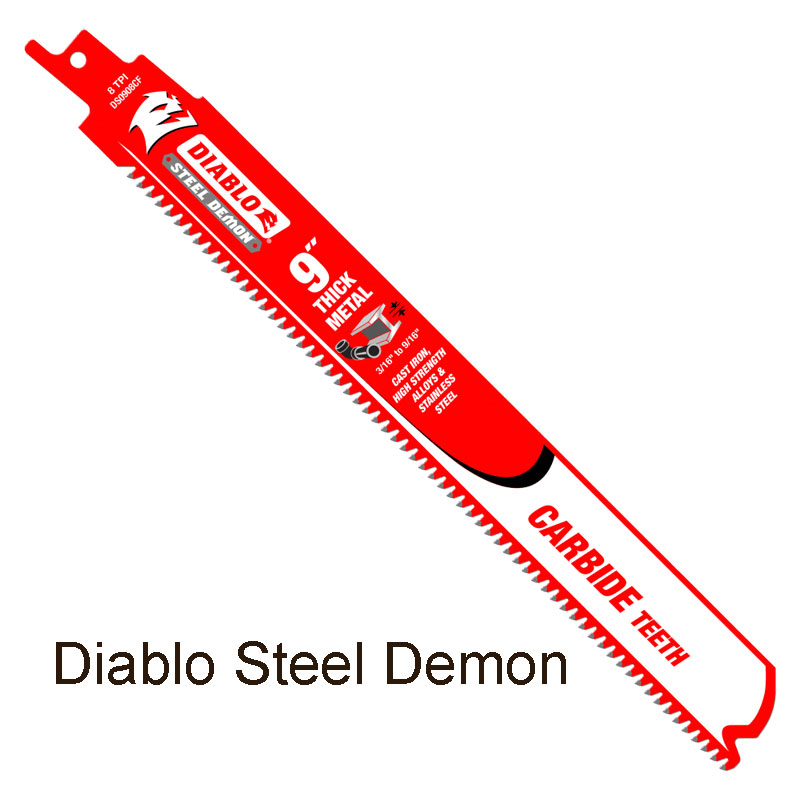MichiganDIWhy
New Member
Hello all
I am renovating my bathroom and have a question on how so solve the titled problem.
Bought the house as foreclosure, toilet leaked, hired a plumber during initial renovations to fix it. No leaks since but there I have to have a plunger next to the toilet constantly. Required repeated flushes to prevent a blockage. I install same toilet in basement closet flange (had basement bathroom but i gutted it when i moved in due to a mold issue). The toilet works fine flushes great.
The flange plumber put in for repair was one of the 3 allen head bolt internal seal toilet flange. A nice sealing fix, but likely the source of my flushing problems. I don't want to make a sparkling clean bathroom and have to keep a plunger at the ready so i'm going to snake the drain get a good toilet and try and provide a smoother flange. Water is expensive where i live and I want do what i can to have a 'no plunger life' while i have the room gutted.
I contacted a plumber to take a look tomorrow but given the size of the job and how busy the trades are I don't expect to hear back, nor can i blame him. Looking for some advice on how to do this properly should i end up having to tackle myself.
Here is the lower part, fully accessible in the basement. 4 inch to 3 inch (i think).
 .
.
This is the upper part of the pipe, with the flange on the top. (i sealed the flange with another flange because HD was out of 4 inch test caps). The internal sealing flange provides adjustment for the angle but something with the proper angle will not. The angle according to my mitre gage and my laser level is 8.5 +/- 1 degrees for 'i did this after a beer'.
There is some slight tilt in the elbow below here but it is not nearly as severe as the pseudo vertical pipe.

Other side of this flange: Based on my reading on this forum, the correct solution would have been new oakam and lead joint to new flange however i don't know if that's possible with this chip out of the cast iron. I need to come up a little higher than i believe would be able to be done with a proper joint.

I am unsure on what to do next. I came up with 2 options with my attempts at reasoning why. I would appreciate help in selecting one or adding 3, 4, 5 etc...
Option 1:
As clean as i can cut the cast iron in the middle of the rise. Install no-hub coupling to convert the 4" cast iron to 4" PVC. Use a 11.25 degree 4 inch bend and try and squeak the remaining 1-3 degrees out of the bend and the no-hub.
(Pros: less new connections to leak, no-hub might have some wiggle room
Cons: unsure if this is recommended way to join waste pipe as its creating a change of diameter in the middle of run. only 2 solvent joints to squeak angle correction out of)
Option 2:
Remove the cast iron vertical completely from the elbow including the lead + oakam joint install a 4" cast iron hub to 4" pvc female to male gasket (i don't know the right word) and insert 4 inch pvc. Install a 4 "pvc as close to vertical as i can achieve and use 2 11.25 degree 4" bends to reach my closet flange.
(Pros: More room for adjustment with 4 solvent joints, smooth entry down to elbow
Cons: The forums tell me the cast iron to pvc gasket diameters are not consistent and i may be dancing with the devil on this one)
Are either of these acceptable alternatives to putting a new lead + oakam joint into the elbow with new cast iron and another joint of the same type with a cast iron closet flange?
If i had the room to move the toilet over a bit, i would but it simply does not exist. I would be moving the south wall of my house.
Thank you all
- Jesse
I am renovating my bathroom and have a question on how so solve the titled problem.
Bought the house as foreclosure, toilet leaked, hired a plumber during initial renovations to fix it. No leaks since but there I have to have a plunger next to the toilet constantly. Required repeated flushes to prevent a blockage. I install same toilet in basement closet flange (had basement bathroom but i gutted it when i moved in due to a mold issue). The toilet works fine flushes great.
The flange plumber put in for repair was one of the 3 allen head bolt internal seal toilet flange. A nice sealing fix, but likely the source of my flushing problems. I don't want to make a sparkling clean bathroom and have to keep a plunger at the ready so i'm going to snake the drain get a good toilet and try and provide a smoother flange. Water is expensive where i live and I want do what i can to have a 'no plunger life' while i have the room gutted.
I contacted a plumber to take a look tomorrow but given the size of the job and how busy the trades are I don't expect to hear back, nor can i blame him. Looking for some advice on how to do this properly should i end up having to tackle myself.
Here is the lower part, fully accessible in the basement. 4 inch to 3 inch (i think).
 .
.This is the upper part of the pipe, with the flange on the top. (i sealed the flange with another flange because HD was out of 4 inch test caps). The internal sealing flange provides adjustment for the angle but something with the proper angle will not. The angle according to my mitre gage and my laser level is 8.5 +/- 1 degrees for 'i did this after a beer'.
There is some slight tilt in the elbow below here but it is not nearly as severe as the pseudo vertical pipe.

Other side of this flange: Based on my reading on this forum, the correct solution would have been new oakam and lead joint to new flange however i don't know if that's possible with this chip out of the cast iron. I need to come up a little higher than i believe would be able to be done with a proper joint.

I am unsure on what to do next. I came up with 2 options with my attempts at reasoning why. I would appreciate help in selecting one or adding 3, 4, 5 etc...
Option 1:
As clean as i can cut the cast iron in the middle of the rise. Install no-hub coupling to convert the 4" cast iron to 4" PVC. Use a 11.25 degree 4 inch bend and try and squeak the remaining 1-3 degrees out of the bend and the no-hub.
(Pros: less new connections to leak, no-hub might have some wiggle room
Cons: unsure if this is recommended way to join waste pipe as its creating a change of diameter in the middle of run. only 2 solvent joints to squeak angle correction out of)
Option 2:
Remove the cast iron vertical completely from the elbow including the lead + oakam joint install a 4" cast iron hub to 4" pvc female to male gasket (i don't know the right word) and insert 4 inch pvc. Install a 4 "pvc as close to vertical as i can achieve and use 2 11.25 degree 4" bends to reach my closet flange.
(Pros: More room for adjustment with 4 solvent joints, smooth entry down to elbow
Cons: The forums tell me the cast iron to pvc gasket diameters are not consistent and i may be dancing with the devil on this one)
Are either of these acceptable alternatives to putting a new lead + oakam joint into the elbow with new cast iron and another joint of the same type with a cast iron closet flange?
If i had the room to move the toilet over a bit, i would but it simply does not exist. I would be moving the south wall of my house.
Thank you all
- Jesse

